
|
| by Delfina de Araujo |
| Surrounding the south face base of Urca Hill and running alongside the sea, in Rio de Janeiro city, Bem-te-vi Path ( Cláudio Coutinho trail), with almost 1.300m long, is the favorite place to take a wald for many "cariocas"(*). Inside of an environmental protected area, this small alley has two different environmental conditions which are alternated, | 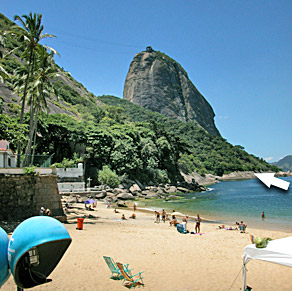 |
| sometimes it presents a naked hillside, | 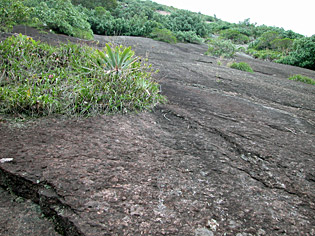 |
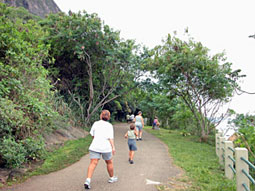 |
sometimes
a small wood with well developed crown trees.
|
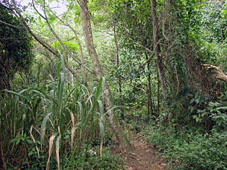 |
|
In the hillside, through the first 600 meters, during the summer, growing straight on the naked rock, in the crevices or still mixed with another rupicolous plants, arise the specimens of Vanilla sp and Epidendrum denticulatum, in a great quantity with its rosy flowers or almost purple, depending on the insolation or how long they last because the tendency is to become darker with the age. Since the second half of the trail, the wood is continuos and the rupicolous don't appear any more because the area is shade. The attraction becomes, taking the place of the flowers, small animals: birds, capuchin monkeys, lizard and even a big shy iguana that doesn't allow to take a picture. They do the gladness of the children and even of the adults. |
 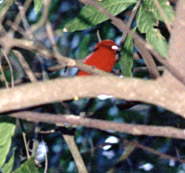 Tiê-sangue male (Ramphocelus bresilius) |
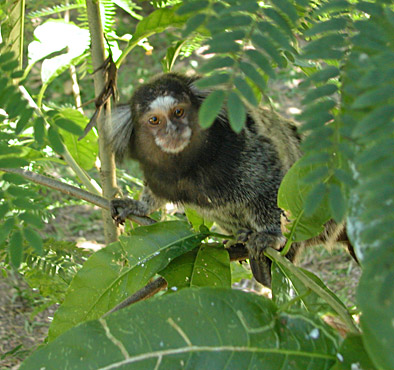 Mico-estrela-de-tufo-branco (Callitrix jacchus). |
| Epidendrum denticulatum grows, at least, in 10 Brazilian states, namely: Alagoas, Bahia, Espírito Santo, Minas Gerais, Pernambuco, Paraná, Rio Grande do Sul, Rio de Janeiro, São Paulo and Santa Catarina. Generously dispersed through Rio de Janeiro city, still today, we also can see it blooming on the rocks of Pinheiro Machado street, in the Barra da Tijuca and at Jacarepaguá Restinga (sandbank). The list of occurrence is long: Praia Vermelha, Niemeyer Avenue, Alto da Boa Vista, Corcovado, Sernambetiba Avenue, Pedra de Itaúna. |
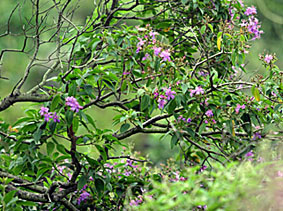 |
 |
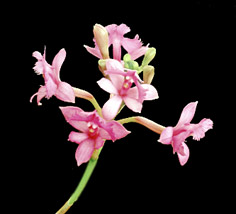 |
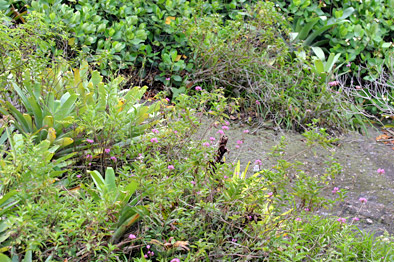 |
|
Barbosa
Rodrigues described this species in 1882, Genera Et Species - Orchidearum
Novarum: This species is one of the subjects of Orchid News #13. See: Orchids from Rio de Janeiro City |
Vanilla
bahiana Hoehne |
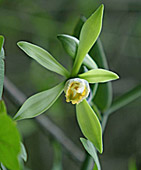 |
| Growing directly on the rocks, mixed to Epidrendrum denticulatum or even protected by the clusia trees, also sprung Vanilla with its green whitish flowers. |
| I
just found 4 plants of this species, one was quite well developed and carried
three inflorescences. This plant receives a strong luminosity although protected by a thin shrub. Next to it, there is another one, not so well developed and carrying just one inflorescence. The two others grows directly on the crevices of the rock and are not very well developed. Just one presents inflorescences. |
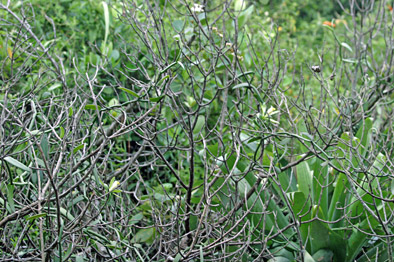 |
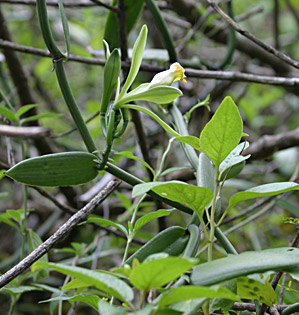 |
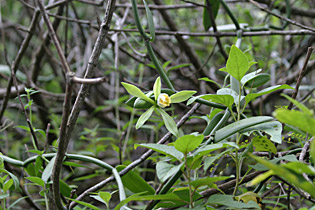 |
|
Guido Pabst, in his work "As Orquídeas do estado da Guanabara" (Orchids from the state of Guanabara - nowadays municipal district of Rio de Janeiro city), Orquídea magazine May-June l966, pages 169/170, mentioned 5 species as native to Rio de Janeiro city: Vanilla
aromatica Sw. (Material collected by Glaziou in Copacabana and Corcovado).
It grows in the states of Amapá, Minas Gerais, Pará and
Rio de Janeiro. |
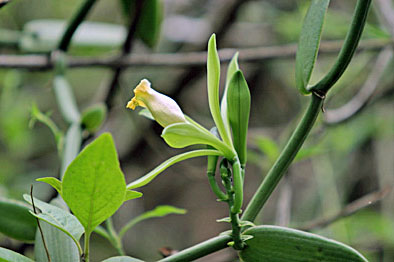 |
|
Vanilla
chamissonis Kl. (Material collected by Glaziou in Copacabana
and Jacarepaguá Restinga (sandbank), next to Recreio dos Bandeirantes,
by Guido Pabst). Species with a bigger distribution area: States of Bahia,
Brasilia, Espírito Santo, Goiás, Minas Gerais, Mato Grosso,
Pernambuco, Paraná, Rio de Janeiro, Santa Catarina and São
Paulo. Pabst did not consider the occurrence of Vanilla planifolia Andr. as natural. He concluded as it is native of Central and North America, the plants we find here could be the resulting of dispersed seeds . However, nowadays, it is considered as native occurring in the states of Alagoas, Espírito Santo, Mato Grosso, Pará and Rio de Janeiro(material collected by Gardner in Corcovado, next to Rio Comprido). In Orchidaceae Brasilienses, Guido Pabst & Dungs also munitionedVanilla edwallii Hoehne as occurring in Rio de Janeiro city (ex state of Guanabara) and also in the states of Paraná, Rio Grande do Sul, Santa Catarina and São Paulo. The genus Vanilla Mill is object of a topic inside the site Brazilian Orchids - See it. (*) Cariocas - people born in Rio de Janeiro city. Bibliography:
|
| All photos by Sergio Araujo. ©2004 Sergio Araujo |
|
Any
kind of reproduction (print, digital or anyone other) of any type of
material of this
site - texts, layout, photos, images and others - is strictly forbidden without the previous written permission of the authors. Any solicitation or information should be done by the e-mail bo@sergioaraujo.com |